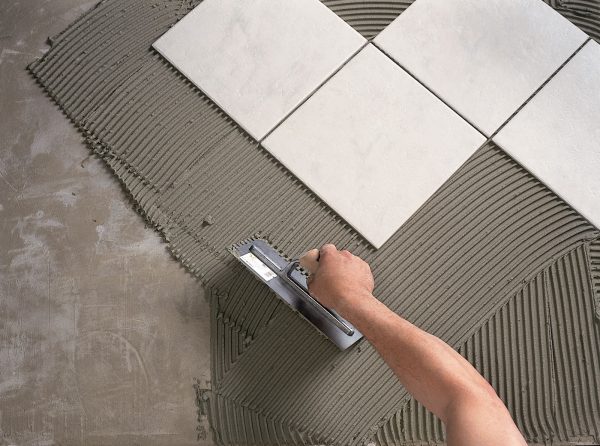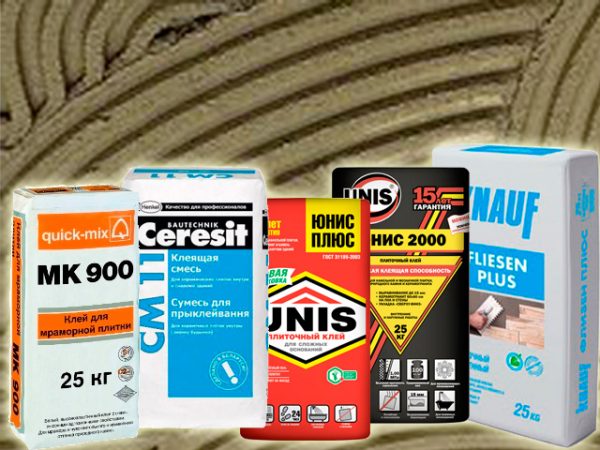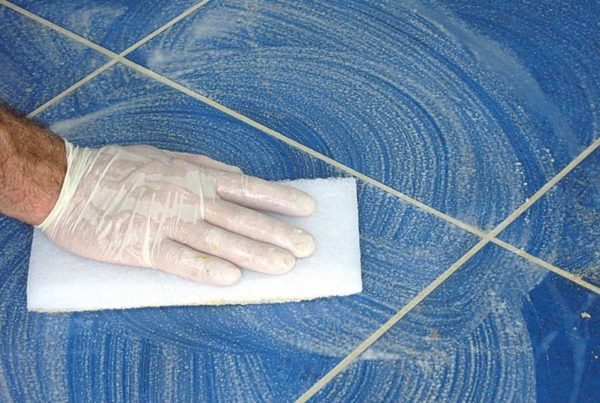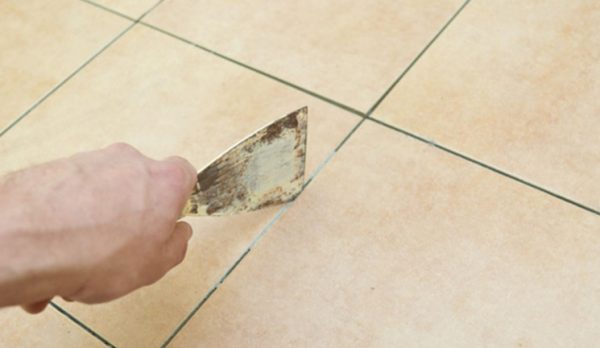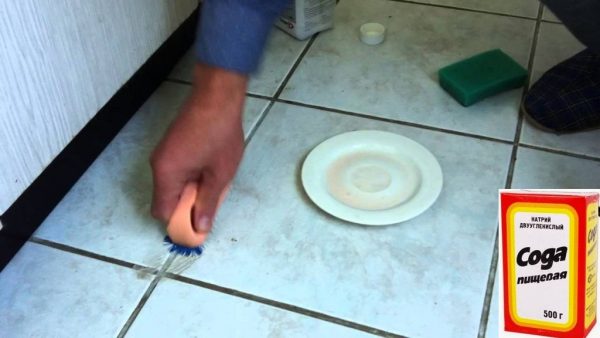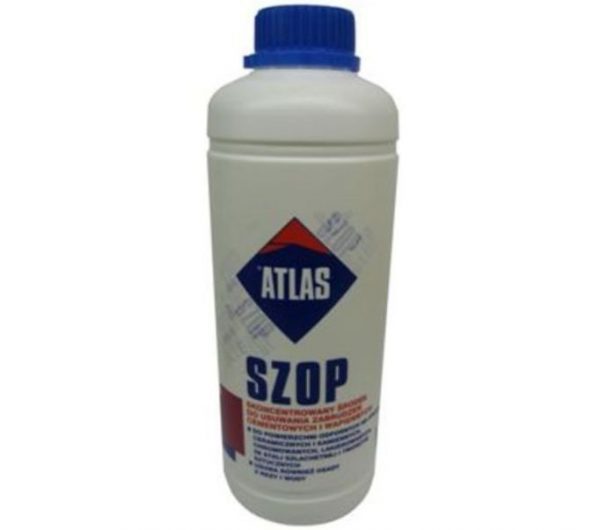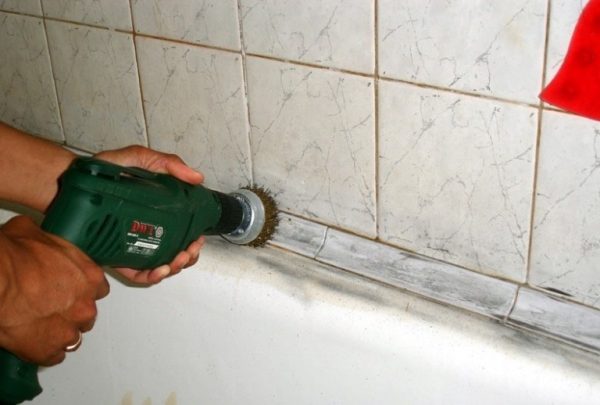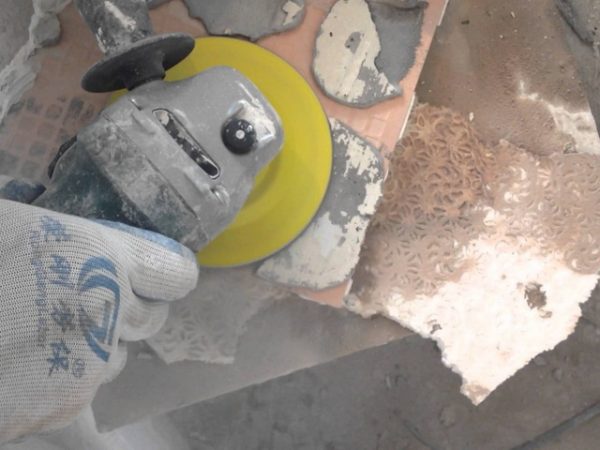When repairing in the bathroom, in the kitchen, there is a need for gluing tiles, porcelain tiles. They are laid on special glue, which is applied from the back. Often this material contaminates the front surface of the masonry, and then you have to think about how to clean the tile from tile adhesive. It is easiest to wash fresh dirt that has not yet had time to harden, but hard glue can also be wiped with improvised means.
- How to stick a tile - a list of tools
- Adhesive Removal
- Liquid composition
- Hardened composition
- Removing glue from a tile - tools and methods
- Folk methods
- Chemical methods
- Mechanical methods
- Removing adhesive from tiles
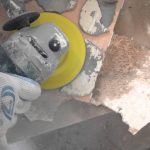
How to stick a tile - a list of tools
Most often, laying tiles on the floor or walls is done with cement glue (mortar). This plastic material contains cement, a certain part of the sand, plasticizers, modifiers. Thickness, low fluidity, high quality allow the tile to firmly adhere even to complex surfaces. Some experts make solutions on their own, combining cement and sand in the right proportion.
Also, the means for gluing tiles can be:
- Epoxy adhesives. Contain epoxy resin. The stock solution is combined with a hardener before use. The result is a very durable product that is difficult to remove from the tile. On the basis of epoxy, grouts for tiles are also made.
- Polymer adhesives. They include various synthetic (polymer) additives, more often are based on acrylic, presented in the form of gels, pastes. They are more expensive than cement, but have excellent quality. They harden quickly and are removed from the outside of the tile without any problems.
- Plaster mixes. Based on gypsum powder and various modifiers. Removing a frozen mortar from a tile will be easier than with epoxy adhesives.
Adhesive Removal
Tile glue often gets on the front side of the material, which happens with inaccurate application, using too much of the product, accidental contact with tools, hands. How to remove glue from ceramic tiles? The method depends on the time that has passed since the appearance of the spots, and on their condition - liquid or solid.
Liquid composition
Wash off the remnants of fresh glue from the wall, the floor is not difficult. You need to do the following:
- take a tight sponge, moisten with water, squeeze;
- remove dirt from the tile, rinse the sponge;
- repeat the operation as many times as necessary;
- when the adhesive is poorly washed off, take a hard rag (dry), rub the contaminated areas with an effort.
If the glue has already begun to harden gradually, you can use a building grater. She needs to carry out the processing of the site, holding the tool vertically. It is important to make movements diagonally - this way glue in the joints of the tile will not be damaged. You don’t need to make special efforts, otherwise scratches and abrasions may remain on the tile. When the adhesive spots have finally hardened, they can be sprayed with water, and then repeat the manipulation with the grater.
to contents ↑Hardened composition
To remove the old hardened glue will have to make more serious efforts. It is generally recommended to use a mechanical method or chemical solvents.Before removing the glue, spray the tile with water from the spray gun. You can also use various improvised tools:
- take a rubber or plastic spatula, a scraper, carefully scrape off a drop of glue;
- scrape off the glue with a plastic card, previously softening it;
- treat complex areas with a pumice stone (work must be done carefully so as not to leave scratches);
- wipe the base with a melamine sponge;
- polish the walls with a microfiber cloth (after spraying with water).
to contents ↑It is undesirable to use a metal tool or hard brushes made of metal to clean the tiles, or all actions should be performed very carefully, because the tile may break. It is better to clean the excess mortar from the tile joints, on the contrary, using a drill with a nozzle (a metal brush). She perfectly cleans the grooves and prepares them for grouting.
Removing glue from a tile - tools and methods
You can get rid of ugly drops, smudges of glue in different ways - folk, mechanical, chemical.
Folk methods
Folk remedies can remove almost any glue - for wallpaper, PVC, other materials. Special options for cleaning tiles from tile adhesive have been developed:
- Vinegar. Take table vinegar 9% or dilute to the appropriate concentration of vinegar essence. Moisten dried glue stains with this solution, wipe with a hard sponge.
- Lemon. Squeeze juice from lemon or prepare a solution based on citric acid (20 g per 500 ml of water). Wipe the tile with a detergent, then rinse it with plain water. If necessary, use a spatula to remove softened glue.
- Baking soda. Using soda, you can remove any tile glue, as well as other dirt from the tile. Pre-wet the surface, and take the soda with a slightly damp sponge and wipe the desired area. To prevent soda from scratching the material, do not use it in a dry form.
- Coca Cola. With this drink, you can also dissolve the glue, oddly enough. The tile needs to be moistened well with the product. It is better if it is not already glued to the wall and can be completely immersed in Coca-Cola. After an hour, the glue softens and lags behind the material.
If the house has a household steamer, another steam generator, it can also come in handy in cleaning tiles. Usually it is used to remove dirt from glue in hard to reach places. After treating the surface with a steam jet, the smudges of the adhesive soften, it easily moves away from the wall, floor. You can erase it with an ordinary rag.
to contents ↑Chemical methods
Of the chemical methods, the most simple, popular is the use of bleach. The “Whiteness” product or other household cleaner with chlorine is suitable. It is necessary to treat the surface of the tile with a clean or diluted product (according to the recommendation on the packaging), then wait 15 minutes. After it is necessary to rinse the wall or floor well with water, wipe dry.
In stores, other cleaners are also sold, which are excellent for glue stains. Tile glue can be removed with acidic agents - Atlas Szop, Keranet. In the form of a gel, Neomid, Plitonit, DDF preparations are produced. Such solutions will remove tiled glue in the form of smudges, drops, and other contaminants that are on the tile after laying (rust, stains). The chemical method must be applied taking into account the following actions:
- first remove ordinary dirt, dust, which is achieved by wiping the surface with a wet rag;
- apply the chosen product with a sponge, be sure to wear gloves (acids, alkalis strongly irritate the skin of the hands);
- treat contaminated areas carefully, without passing glue accumulations, otherwise part of them may remain undissolved;
- wait the necessary time with a margin, otherwise you have to combine the chemical method with the mechanical one, apply extra effort;
- flush the wall, the floor from the applied substance with high quality, so as not to breathe its fumes subsequently;
- it’s best to pick up glue removers that are recommended by the manufacturer of the adhesive itself (often such information is on the package);
- it is bad if the composition has large abrasive particles, they can cause scratches, especially on expensive types of tiles;
- aggressive chemicals spoil the glazed tiles, which must be taken into account when carrying out work;
- chemical washing is able to dissolve tile seams, so you will have to protect them first - stick a thin strip of masking tape.
to contents ↑For the duration of tasks to clean the tiles, you need to keep the window open or provide a different type of ventilation. Otherwise, it is possible to poison with harmful fumes, because many acids and alkalis are toxic. If the product comes into contact with the skin, it must be washed quickly with warm water and greased with cream.
Mechanical methods
Typically, mechanical cleaning is applied to stubborn stains, as well as for large areas of surface contamination. Often, masters use a grinder with an abrasive nozzle-disk for this purpose. You can also act manually by taking a hammer and chisel. The work is done like this:
- attach the pointed part of the chisel to the area of the glue spot;
- make a series of light blows with a hammer on the opposite side, gradually moving the tool;
- drops of solution will begin to break off the wall;
- remove the remaining tile adhesive with a solvent, rinse with detergent or soak, and then clean with a stiff brush.
The mechanical method can also include the use of rubber, plastic spatula (metal - not recommended). It is better to pre-soften the glue so as not to provoke the appearance of scratches.
to contents ↑Removing adhesive from tiles
Sometimes it becomes necessary to re-stick old tiles. After dismantling, it must be cleaned thoroughly, otherwise the masonry will not be smooth and will quickly fall off. The composition is on the inside of the tile, and due to the thick layer it is rather difficult to remove. You will have to soften the tile glue, and then remove it with a grinder. But any careless movement leads to cracking of the tile, moreover, such work causes the appearance of a large amount of dust.
It is best to pre-soak the solution - immerse the tile for a couple of days in cold water (hot only intensifies the work of plasticizers). After soaking, the glue softens, and you can remove it with a grinder, sandpaper, construction grater or bar. Residues are removed with solvents based on acids, chlorine. At the end of the work, the tile is washed, dried, after which it will be ready for reuse. Following simple tips, you can give the material the appearance of a new tile, which will seriously save repair costs.

